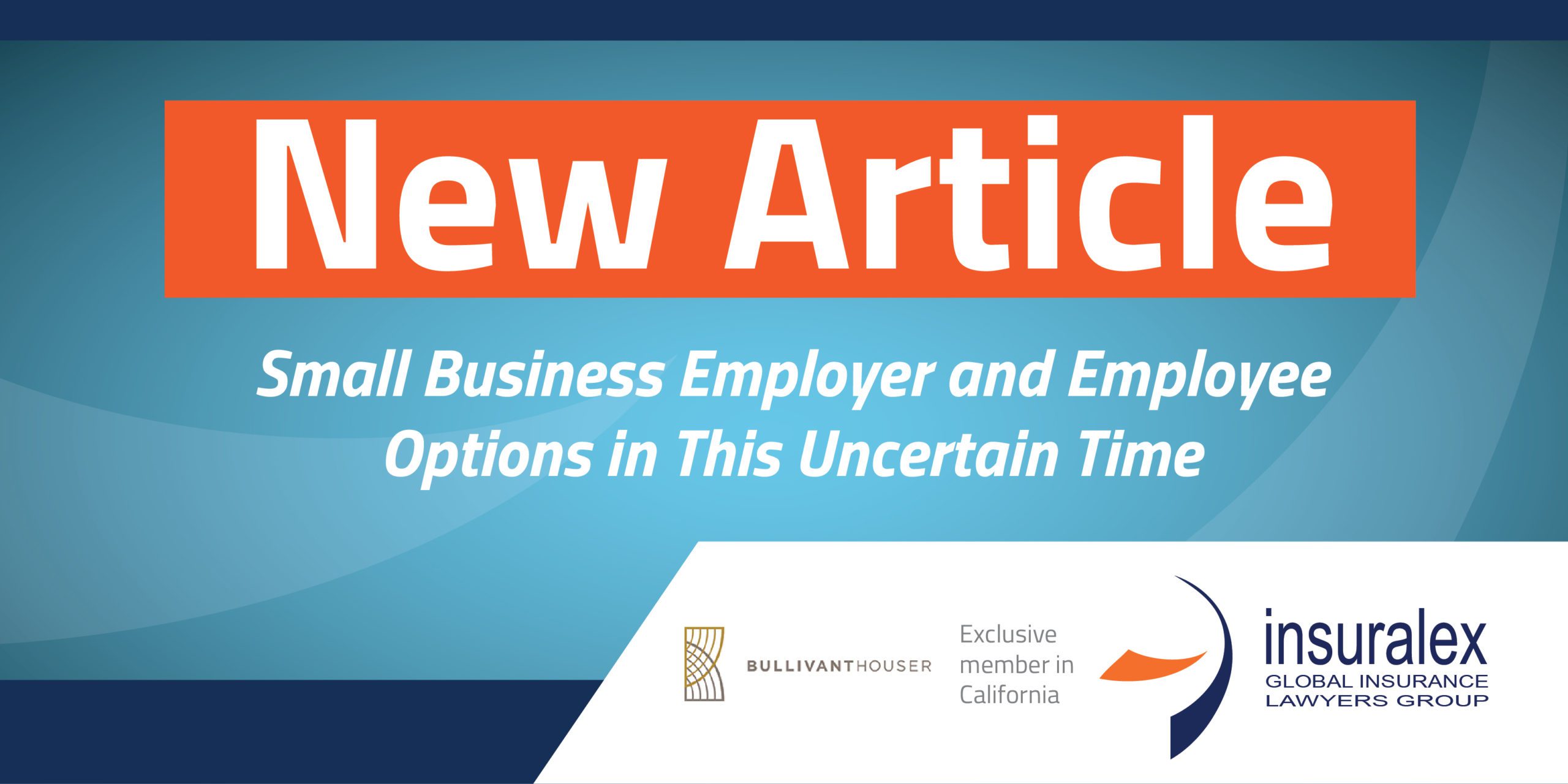
Many small U.S. businesses are facing uncertainty about continued viability as a result of the COVID-19 pandemic. An important part of this deliberation is how these small businesses can not only continue operations, but care for their valued employees during continued operation. The legal landscape related to these issues is constantly evolving. This article addresses some available legal options in the current legal landscape related to both small employer and employee rights related to the pandemic.
- The employee is subject to a federal, state, or local quarantine or isolation order related to COVID-19.
- The employee has been advised by a health care provider to self-quarantine due to concerns related to COVID-19.
- The employee is experiencing symptoms of COVID-19 and is seeking a medical diagnosis.
- The employee is caring for an individual who is subject to an order described in bullet point 1 above or has received advice as described in bullet point 2 above.
- The employee is caring for a son or daughter because the son’s or daughter’s school or place of care has been closed due to COVID-19 precautions.
- The employee is experiencing “any other substantially similar conditions” as specified by the Secretary of Health and Human Services.
- The employee is caring for a son or daughter because the son’s or daughter’s school or place of care has been closed due to COVID-19 precautions.
- 100% for leave taken for the following reasons, limited to $511 daily and $5,110 total.
- The employee is subject to a federal, state, or local quarantine or isolation order related to COVID-19.
- The employee has been advised by a health care provider to self-quarantine due to concerns related to COVID-19.
- The employee is experiencing symptoms of COVID-19 and is seeking a medical diagnosis.
- 2/3 for leave taken for the following reasons, limited to $200 daily and $2,000 total.
- The employee is caring for an individual who is subject to an order described in the first bullet point above or has received advice as described in the second bullet point above.
- The employee is caring for a son or daughter because the son’s or daughter’s school or place of care has been closed due to COVID-19 precautions.
- The employee is experiencing “any other substantially similar conditions” as specified by the Secretary of Health and Human Services.
- 2/3 for leave taken for the following reason, limited to $200 daily and $10,000 total.
- The employee is caring for a son or daughter because the son’s or daughter’s school or place of care has been closed due to COVID-19 precautions.
| Conditions |
Paid Sick Leave
(full-time employees)
|
Paid FMLA Leave
(full-time employees)
|
|---|---|---|
| 1. The employee is subject to a federal, state, or local quarantine or isolation order related to COVID-19. |
YES
Up to 80 hours paid at 100%, up to $511 daily and $5,110 total
|
NO |
| 2. The employee has been advised by a health care provider to self-quarantine due to concerns related to COVID-19 |
YES
Up to 80 hours paid at 100%, up to $511 daily and $5,110 total
|
NO |
| 3. The employee is experiencing symptoms of COVID-19 and is seeking a medical diagnosis. |
YES
Up to 80 hours paid at 100%, up to $511 daily and $5,110 total
|
NO |
| 4. The employee is caring for an individual who is subject to an order described in item 1 above or has received advice as described in #2 above. |
YES
Up to 80 hours paid at 2/3, up to $200 daily and $2,000 total
|
NO |
| 5. The employee is caring for a son or daughter because the son’s or daughter’s school or place of care has been closed due to COVID-19 precautions. |
YES
Up to 80 hours paid at 2/3, up to $200 daily and $2,000 total
|
YES
Up to 10 weeks paid at 2/3, up to $200 daily and $10,000 total
|
| 6. The employee is experiencing “any other substantially similar conditions” as specified by the Secretary of Health and Human Services. |
YES
Up to 80 hours paid at 2/3, up to $200 daily and $2,000 total
|
NO |
Authors
 Sarah K. Bowen
Sarah K. Bowen
Associate, San Francisco Office
Direct Dial: 415.352.2715
 John M. Kreutzer
John M. Kreutzer
Shareholder, Portland Office
Direct Dial: 503.499.4420
Fax: 503.295.0915
E: john.kreutzer@bullivant.com






